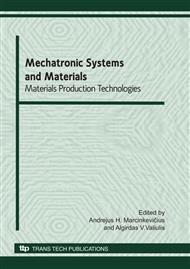p.382
p.388
p.394
p.400
p.404
p.410
p.414
p.419
p.425
Intelligent Agent Find its Way in the Drawing
Abstract:
This article analyzes intelligent agent in the changing drawing. The objective is to find the shortest way between two points in the flat space with prominent polygon fences. This is an idealized task that a robot (agent) has to solve seeking to find its way in the environment (drawing). The creation tasks of intelligent agent are solved with agent unified modeling language. Graphical system can analyze drawing, forming graph, calculate graph matrices, extract route and prepare programs form with information. It discerns objects-classes: agent, graph, route, which have some properties and methods. System test is executed with three drawings. Design system and example of intelligent agent in the drawing is presented. Intelligent agent systems are discussed and conclusions are made.
Info:
Periodical:
Pages:
425-430
Citation:
Online since:
June 2010
Authors:
Price:
Сopyright:
© 2010 Trans Tech Publications Ltd. All Rights Reserved
Share:
Citation:


